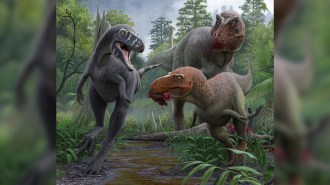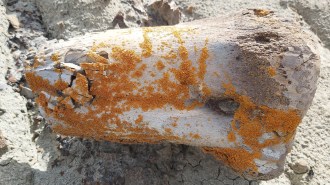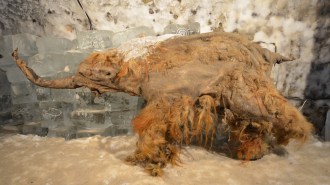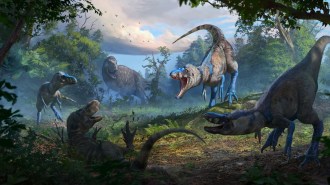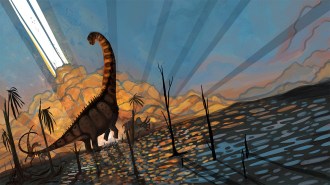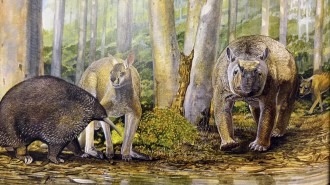‘Frankenstein’ dinosaur was a mash-up of meat eater and plant eater
Bizarre theropod that roamed South America 150 million years ago may help answer evolutionary questions

MIX AND MATCH Fossils found in Chile reveal a new dinosaur species with a mishmash of anatomy — a little bit T. rex and a little bit Brontosaurus.
Gabriel Lío
- More than 2 years ago
Frankensaurus did exist. But don’t worry — the sharp-clawed creature was a vegetarian.
Bones found in Chile reveal a bizarre new dinosaur that had a hodgepodge of anatomical features. Based on an ancestry that links it to Tyrannosaurus rex, Chilesaurus diegosuarezi should have been a meat eater, but preferred plants instead, researchers report April 27 in Nature. The discovery supports the idea that not all early T. rex relatives were out for blood and suggests that dinosaurs in nascent South America may have evolved differently than those on other continents.
“Chilesaurus is so unexpected, so drastically different than anything else we’ve seen before. It’s an anatomical Frankenstein,” says Lindsay Zanno of the North Carolina Museum of Natural Sciences in Raleigh.
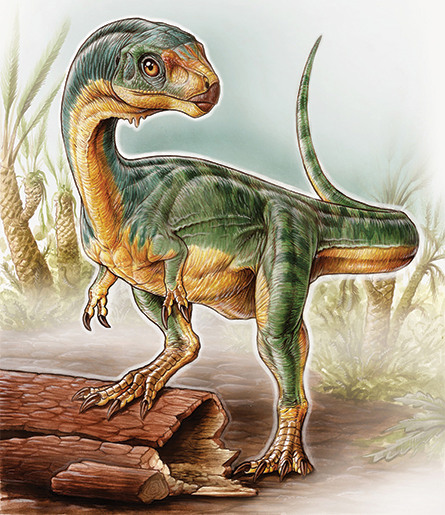
Using several computer analyses, Novas and colleagues compared C. diegosuarezi’s features with many other types of dinosaurs. The results revealed that the new dinosaur was an early theropod. Meat eaters like T. rex have made this class of dinosaurs famous, and, as a result, scientists had thought that all theropods were carnivores. But studies have begun to suggest that some theropods evolved into plant eaters, says paleontologist Peter Makovicky of the Field Museum in Chicago. A lot of the fossil evidence for this switch in diet is based on tooth shape and dates to roughly 125 million years ago.
“Chilesaurus made the switch to plant eating much earlier. It may have been one of the first experiments in theropod evolution to try the transition,” Novas says. Another theropod called Limusaurus may have made the switch a few million years earlier (SN: 7/18/09, p. 12). Zanno says if C. diegosuarezi’s place in the theropod family tree is confirmed, there may be up to seven instances of theropods straying from their bloodthirsty ancestry.
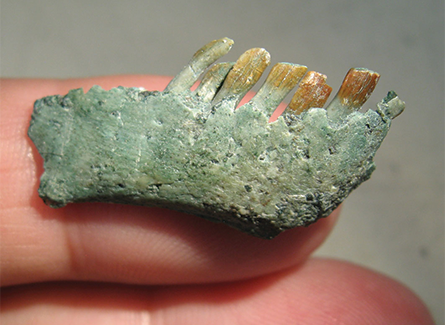
“Just a decade ago, no one would have imagined that theropod dinosaurs, Earth’s quintessential predators, would turn out to be one of the best evolutionary case studies for how animals adapt to plant-based diets,” Zanno says. Figuring out how and why certain theropods made the switch will be exciting, she says.
Novas argues that C. diegosuarezi’s mélange of features also add a wrinkle to paleontologists’ idea that dinosaurs were similar across the continents throughout the Jurassic period, which ended roughly 145 million years ago. “South America may have been a cradle for different kinds of dinosaurs that were not found elsewhere in the world,” he says.
Makovicky says the idea that dinosaurs were different in South America could be true. But, he says, scientists need to find more dinosaur fossils from the continent in order to confirm it.

